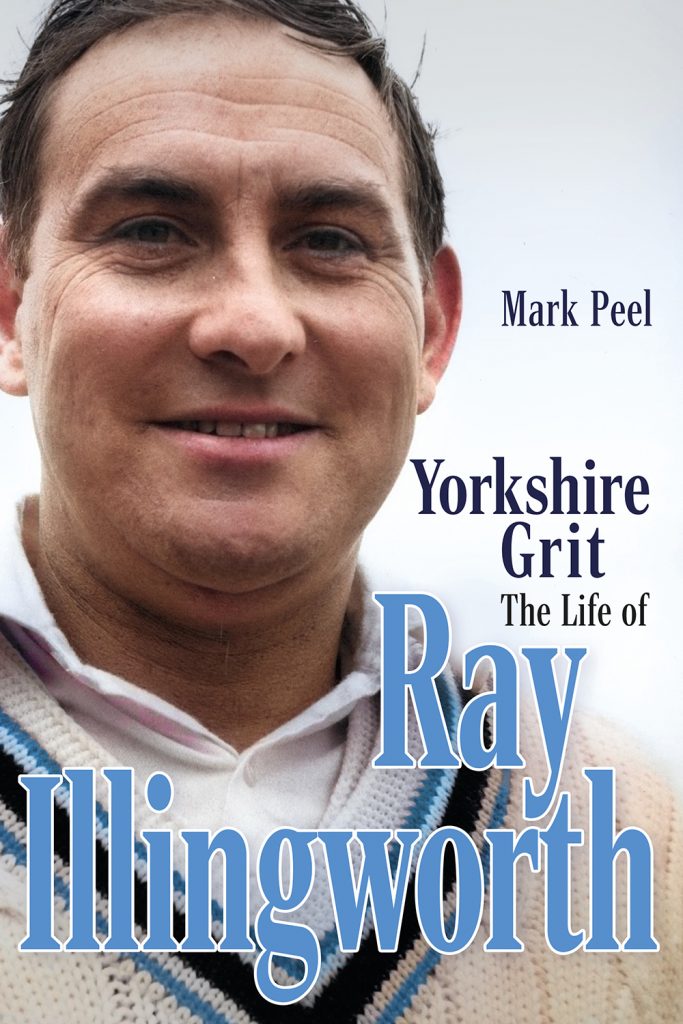By Mark Peel, Pitch Publishing, pp 288, £25, ISBN 9781801504522, e-book £9.99

This new book by Mark Peel brings to mind the demise of the traditional book shop where one was welcome to browse the shelves and dip into any titles that appealed. A fresh treatise on Ray Illingworth, inevitably revisiting well-worn territory, poses the question of whether there will be enough fresh insights to justify purchase. Flicking through as one might in a retail outlet soon makes clear that the author, as usual, has scoured an impressive list of printed sources but, most gratifyingly, he has also unearthed a wealth of new verbatim testimony about one of the most influential figures of post-war English cricket. The prospect of a book to be relished was wholly fulfilled.
After fighting his way into a strong Yorkshire team in the early 1950s, Illingworth’s county performances with bat and ball – he completed the double six times – make it surprising that he did not achieve more for England. Though successful as a bowler under the captaincy of his friend Brian Close, his best years in Test cricket, especially with the bat, came after he had assumed the captaincy in 1969. By this time Yorkshire’s rigid attitude to the awarding of contracts had seen him seek fresh pastures. Lured by the offer of the captaincy, Illingworth had joined Leicestershire. The season had begun with Colin Cowdrey secure as England captain, his reputation boosted by a successful tour of the West Indies. When a snapped Achilles tendon ruled him out for the summer, the selectors’ choice as stand-in was Illingworth. Always the favourite of the Lord’s establishment to lead in Australia, Cowdrey was to find that the selectors preferred to stick with Yorkshire grit and tactical acumen. They were rewarded with the Ashes – but with diplomatic priorities side-lined.
Though there were years of further success with Leicestershire, winning in Australia was the peak of Illingworth’s career. Thereafter his continuing involvement with cricket was seldom free from controversy. A return to Yorkshire as manager took him into a divided dressing room and the debate about whether Geoffrey Boycott’s runs were worth the hassle. There was another problem: Illingworth’s style is not that of an adviser – he must be in charge. So, at the age of 50, he laid his frustrations aside and returned to the field as captain.
There was a spell as a media pundit during which there was the chance of becoming England’s first team manager, effectively full-time coach. The position taken by Micky Stewart had been virtually offered to Illingworth, but it did not bring the absolute power he sought. Some years later, in 1993, he was appointed chairman of selectors, a position in which he was soon in conflict with England captain Mike Atherton and Mike Smith, tour manager in Australia. Putting his oar into affairs from England had not been helpful and the following winter in South Africa Illingworth was managing the show himself.
Problems abounded, most notably Devon Malcolm’s resistance to having his bowling action changed. Matters came to a head when a wayward spell at Cape Town enabled Illingworth to blame his fast bowler for losing a Test match and with it the series. That Malcolm was the only black man in the party, singled out for attention when the team were presented to Nelson Mandela, added to the sensitivity of the strictures. An unhappy tour was capped by a World Cup performance in India and Pakistan that showed the England manager woefully out of touch with developments in the one-day game. His days of influence were up as the baton passed to David Lloyd.
With so much to admire and so much that went wrong for Illingworth, not least the legal wrangling in the aftermath of the criticisms of Devon Malcolm, Mark Peel has done cricket lovers a favour with his balanced account of the different perspectives. Illingworth had died before Peel got to work and among the 30 listed names of those who helped him particular thanks are extended to Ashley Metcalfe, Illingworth’s son-in-law, who lived next door to him and who could testify to a closely-knit family in which the lines on the Metcalfe lawn remain testimony to Ray’s kindness in showing exactly how to get the best out of the mower.
The author has been nominated for awards for less well-crafted books, and his publisher has served him well. They are not alone in misspelling the name of Kerry O’Keeffe while Barry Dudleston, another trap for the unwary, is wrong only in the acknowledgments. A couple of other errors apart, the proof-reading is of a high standard. The book is attractively presented, but a cover price of £25 for what might recently have been an £18 or £19 book prompts the thought that more suitable paper might have been used for the illustrations, while it seems appropriate to pursue the campaign for the short statistical appendix that should be a standard accompaniment to a biography of this nature.
Douglas Miller (The Cricket Statistician, November 2023)
